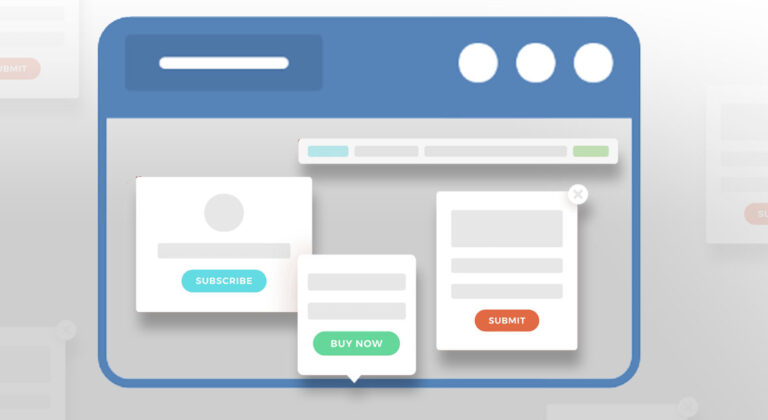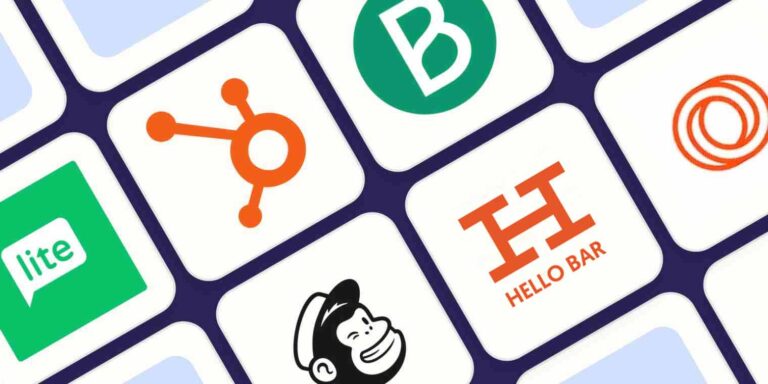What is a Good Email Open Rate and 13 Tips to Improve Yours

I hope you enjoy this blog post. If you want Hello Bar to grow your leads, click here.
Author:
Ryan Bettencourt
Published
June 24, 2024

We get asked this question all the time: What is a good email open rate?
Unfortunately, there’s not a definitive answer. If there were, we wouldn’t have to write an entire article on the subject.
However, there are a few things you should know as a marketer to improve your email open rate and make sure your email deliverability stays high. If you’re participating in opt-in email marketing — and you should — data can provide the answers to your most pressing questions. That’s what we’re going to cover today.
What is Email Open Rate?
Email open rate is a metric marketers use to determine what percentage of their subscribers actually open the emails sent to them.
Let’s say that you have a list of 1,000 email subscribers in your desktop database. You send out a marketing email, then check your open rate. Based on your data, 500 people opened your email.
That makes your email open rate 50 percent. Half of your subscribers actually opened your message.
Of course, that doesn’t tell the whole story. However, it’s a good indication of how well your email marketing campaign is progressing.
Why? Because when people don’t open your emails, they never get the chance to discover what you have to say in the body of that email. You wind up with inconsequential emails that do nothing to help you grow your business.
Of course, you can’t expect everyone to open your messages. But you can use your email open rate to gauge your marketing campaign’s health.
What Does Open Rate Indicate?
Before we can answer the primary question — What is a good email open rate? — we need to figure out what open rates mean.
Open rates tell you how well your outreach email marketing is working.
A high open rate suggests that your emails are:
- Catching the attention of recipients with compelling email subject lines
- Reaching inboxes and avoiding spam filters
- Appealing to the recipient list (content is relevant to their interests)
On the other hand, a low open rate might signal a need to improve areas like:
- Subject line
- Content relevancy
- Sender reputation
It’s a comprehensive perspective that provides a clear picture of your campaign’s performance that allows you to evaluate what works in your emails and how you can improve your email campaigns.
For a well-rounded understanding of your campaign’s performance it’s important to consider open rates alongside other metrics. These metrics can include click rate, conversion rate optimization, unsubscribe rate and more.
How Do You Calculate Email Open Rate?
It’s easy to calculate your email open rate. You divide the number of people who open your emails by the total number of subscribers, then multiply the result by 100.
Let’s say you have 7,500 subscribers and 6,600 opened your email. You would divide 6,600 by 7,500, which is .88. Multiply .88 by 100 to get your email open rate percentage: 88 percent.
What Is a Good Email Open Rate In 2024?

You can get a benchmark to determine what is a good email open rate by looking at email marketing statistics. The average open rate across all industries is 39.7%, with a 1.0% CTR.
Does that depress you? It shouldn’t. It’s just a number to be aware of. If you are achieving higher or lower open rates, you know where you stand.
What is The Average Email Open Rate Of Each Industry?
Average open rates can vary depending on your industry. While a healthy overall target might be around 39%, some industries consistently outperform this number.
Understanding these benchmarks enables you to evaluate the effectiveness of your campaign in comparison to your counterparts.
For example, industries like education and government often have greater open rates due to the relevance of the information being conveyed.
In contrast, industries such as consulting or e-commerce may confront more intense rivalry for attention in overloaded inboxes. Knowing your industry’s average open rate allows you to set achievable targets and identify areas for growth if your efforts fall short.
The table below shows what is a good open rate for your industry and how well does your email engagement rate compare.
| Industry | Avg. Open Rate | Avg. Click Rate |
| Architecture and Construction | 31.08% | 2.95% |
| Agriculture and Food Services | 38.02% | 38.02% |
| Arts and artists | 42.17% | 2.8% |
| Beauty and Personal Care | 31.89% | 1.3% |
| Business and Finance | 31.35% | 2.78% |
| Computers and Electronics | 26.98% | 2.19% |
| Consulting | 29.61% | 2.92% |
| Creative Services/Agency | 32.37% | 2.53% |
| Daily Deals/E-coupons | 27.59% | 2.1% |
| Ecommerce | 29.812% | 1.74% |
| Education and Training | 35.64% | 3.02% |
| Entertainment and Events | 37.3% | 2.31% |
| Games | 31.45% | 3.22% |
| Government | 40.55% | 4.58% |
| Health and Fitness | 37.07% | 1.87% |
| Hobbies | 40.55% | 4.12% |
| Home and Garden | 35.69% | 2.27% |
| Insurance | 30.08% | 2.96% |
| Legal | 31.4% | 3.14% |
Why Is Your Email Open Rate Low? 4 Possible Reasons
Even when you know what constitutes a good email open rate, the real test comes when your rates take a dip. A lot of factors affect email open rates, like wrong email addresses, emails going to spam, ineffective subject lines, and more.
Let’s look at the four potential reasons for low email open rates.
1. You Have Boring Subject Lines
Email subject lines are the lifeblood of your marketing campaign. If you have a bad subject line, you don’t get to present your message to your audience.
Of course, you need good email copywriting skills, too, but that’s another issue. First, we need to get people to open up so they can read.
A good email subject line arouses curiosity, evokes excitement, or engages the reader’s interest in some other way. For instance, if you let people know that there’s a surprise inside — such as a discount code — you’re more likely to get good email open rates.
3 Things to Ask Before Drafting a Subject Line
There are a few questions about email subject lines that you should ask yourself before sending them. Let’s look at a few of them and their answers.
- Whether to personalize the subject lines? Yes, if you have your subscribers’ names, test using them in the subject lines to increase open rates.
- Is it possible for you to add emojis? Yes, but only if they’re relevant and tasteful. Make sure you don’t offend your audience — or, perhaps worse, confuse them.
- Will a shorter subject line work better? In some cases, yes. Since many people open their emails on mobile, they see less of the subject line on their screens.
2. You Are Probably Not Segmenting Your Email List Well Enough
Email segmentation is critical. I can’t stress that enough.
Make sure you’re sending emails to the right people at the right time. For instance, you don’t want to send a bottom-of-the-funnel email to someone who has just encountered your brand for the first time.
3. You Have Too Many Inactive Email Subscribers
People become inactive for lots of reasons. Maybe they’ve already made a one-time purchase, so they no longer need to hear from you. Perhaps they’ve closed their addresses or decided they’re not interested in your products.
There’s nothing wrong with any of those scenarios. Regular email list cleaning will remove inactive subscribers to make sure you’re getting accurate metrics.
4.You Are Not Getting Qualified Leads
There’s a huge difference between a lead and a qualified lead. A qualified lead legitimately wants to hear from you and has a strong likelihood of buying from you in the future.
Hello Bar allows you to improve your email collection process across the board. Use top bars and exit popups to advertise your lead magnets and convince qualified prospects to subscribe.
All you have to do is sign in to your Hello Bar account and create the type of asset you want. For instance, an exit intent popup will appear when someone decides to leave your site.
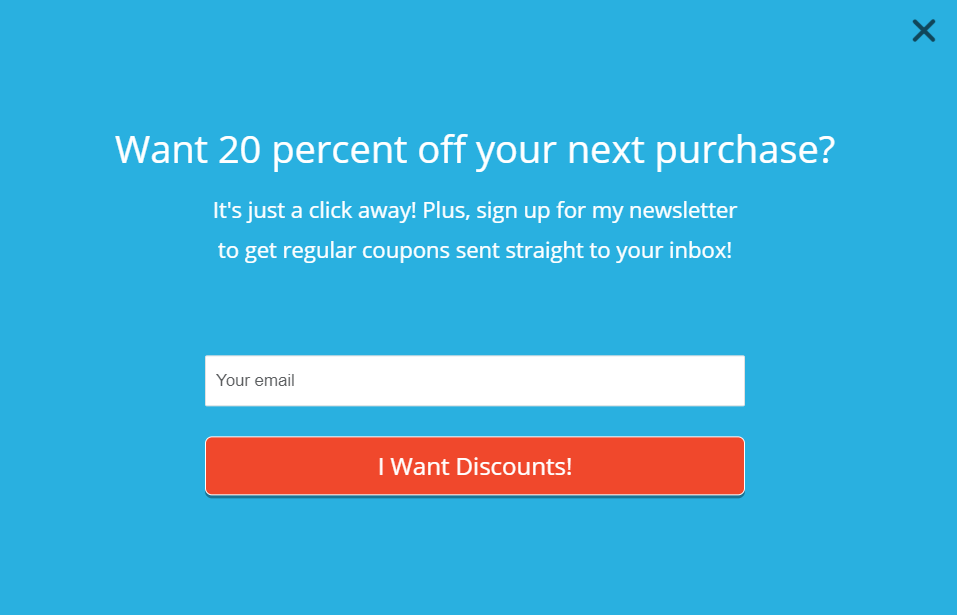
If you’re using a discount as your incentive, you can let people know so they’re more motivated to sign up. Plus, it shows purchase intent.
Steps to Achieve a Good Email Open Rate

One problem we see a lot is unreasonable expectations. If you’re a brand new business, you can’t expect to collect 5,000 email addresses and get a 50 percent open rate in the next month.
It’s next to impossible.
Set realistic goals so you’re working toward something that you can achieve.
Step 1: Chart Your Email Metric Rates From Past Quarters
A great place to start is with historic data. If you’ve been tracking your email metrics over time, you can pinpoint trends that might help you improve your current numbers.
Export the data to a spreadsheet. You can also create graphs to help you see them more clearly. It all depends on how you best process data.
Step 2. Identify Good or Bad Email Outliers
Every email you send will have a different open rate. What you’re looking for are the outliers.
Let’s say you have one email that achieved a 26 percent open rate. That’s impressive. But why was it so successful? Examine the subject line, offer, power words, and other features that might help you replicate that success.
Similarly, if you have an email that only got opened by 10 percent of your subscribers, figure out why it failed. Compare it to the “good” emails so you don’t make similar mistakes down the road.
Step 3: Check for Patterns You Can Explore for Future Campaigns
Patterns are extremely useful.
For instance, maybe your email open rates go up significantly over the holidays. If you’re running an ecommerce email marketing campaign, those increased numbers might have to do with seasonality.
Step 4. Set Up Future Campaign Goals
Benchmarks can be useful simply for knowledge purposes, but don’t obsess over them. Instead, review your data and set a reasonable goal for your next campaign.
Moving the needle by just a few percentage points is a great goal. What is a good email open rate? One that helps you boost conversions and revenue. It’s that simple.
How to Improve Your Email Open Rate: 13 Amazing Tips

We’ve gone over some of the logistics regarding email open rates, but how do you apply that knowledge to your own campaigns? I’ve prepared 13 tips to help you succeed with email marketing.
1. Get Better and More Qualified Leads
It all starts with learning how to build an email list. If you don’t have subscribers, open rates don’t matter.
It’s easy to create a bar in Hello Bar that allows you to collect more emails. You decide what your headline and call to action say.
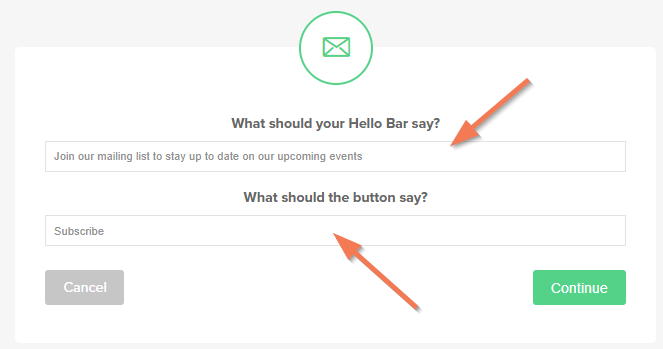
If you’re not getting qualified leads, test your offers. Hello Bar allows you to set up A/B tests in a matter of seconds. If a plain offer to learn about your business doesn’t work, try something more appealing.

2. Use Industry-Specific Lead Magnets
Your lead magnet should be specific to your industry. In other words, it can’t just be something “everyone wants.”
Will people sign up for your email list to get a brand new iPhone? Absolutely. But that means they’re not qualified leads. They’ll take the iPhone, but will probably never buy from you.
Create a lead magnet your target customer will want. It might be a tool, a calculator, or a checklist. Make it unique.
3. Constantly Segment Your Lists for Better Email Open Rates
As mentioned above, a properly segmented list will enjoy better open rates than one without segmentation. Your leads fall into categories based on where they sit in the buyer’s journey.
New subscribers need to be eased into your campaign. People who are familiar with your brand might be ready to purchase. Send them discount codes and other incentives to buy.
4. Constantly Clean Up Your Email List
A clean list is a healthy list. If you’re letting your email list grow without pruning out the inactive subscribers, you’re doing yourself a disservice.
Clean your email list at least once a quarter. If it’s extremely big, make it once a month or even once a week. You can’t clean too often.
5. Avoid Getting Your Emails Getting Caught By Spam Filters
Spam words are death to an email marketing campaign. If you don’t want Gmail, Yahoo!, Outlook, and other providers to direct your emails directly to users’ spam folders, avoid words that trigger spam filters.
Words like free, zero percent, code, and no money down are all dealbreakers. Stick with casual, engaging language.
6. Use Catchy Email Subject Lines to Get a Good Email Open Rate
My best advice for writing catchy email subject lines is to experiment with language. Open a thesaurus and find new words to express the same things.
Consider this email subject line.
Free Webinar Today: Conquer Your Day
The wording here is unique. It could say, “Free Webinar Today: Time Management Tips,” but it doesn’t. The word “conquer,” is a better synonym for “manage” and creates a sense of intrigue about the webinar’s content.
7. Perform A/B Tests to Figure Out the Best Time to Send Your Emails
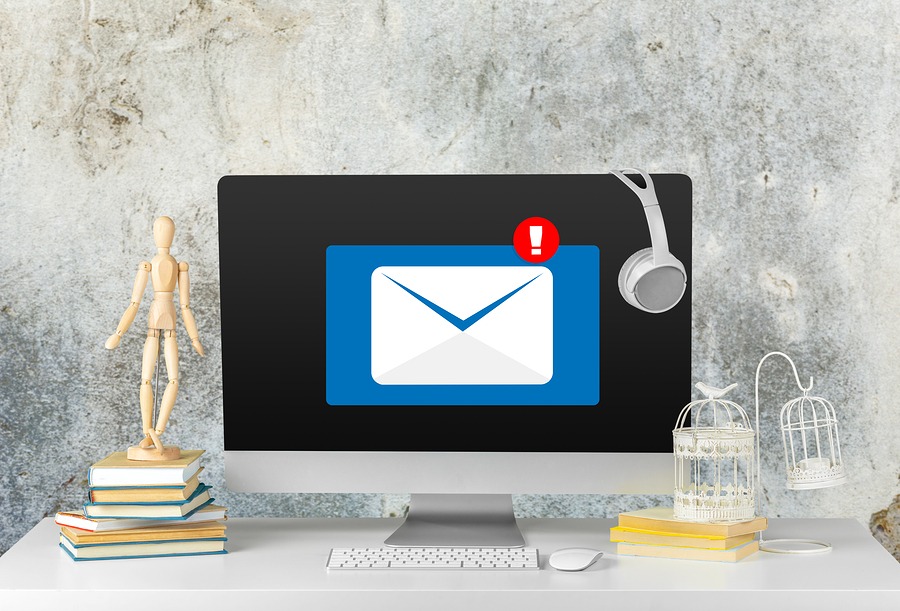
A/B testing is worth its weight in gold. Figure out the best time to send your emails by testing different days and time frames.
Maybe your audience is most likely to open your emails if they get them on their lunch hour or right after the workday ends. Perhaps they check their email in the morning and like seeing a surprise from your brand.
8. Personalize Your Email Subject Lines
There’s nothing better than getting a little personal. Simply adding the subscriber’s name to the subject line can increase open rates.
Why? Because it feels more intimate. And people naturally respond to the sight or sound of their own names.
9. Be Personal With Your Email Subscribers
Instead of writing a promotional email, consider writing a letter as though you were addressing a friend. Write in a casual tone and keep the subject light. You might even share a secret about yourself — a time you failed, for instance, or a problem you suffer from.
When you’re willing to get personal, people look forward to seeing your emails. They know you’re not just going to espouse the same marketing gobbledegook everyone else writes.
10. Write Amazing Content and Use Storytelling to Convey Your Message
Building on the latest point, focus on telling stories. Why do you think personal and corporate blogs became so popular? People were being open and honest about themselves.
These days, businesses want to cover up the battle scars and mistakes. If you’re different — if you’re willing to actually live in a transparent space — your audience will respond.
Start with those subject lines. Let them know you’re about to tell a powerful, moving, entertaining, or inspiring story.
11. Use Humor If Appropriate
Humor can break down a lot of barriers. If you make people laugh, they’ll come back for more.
Think about what you do when you’re stressed out, frustrated, or angry. You might watch stand-up comics on Netflix, watch funny cat videos on YouTube, or call a friend who always makes you laugh.
We seek out humor because it reduces stress and relieves anxiety. If your emails provide that, your open rates will soar.
12. Optimize for Mobile Devices to Improve Your Email Open Rates
We don’t know about you, but we always have a mobile device of some kind within arm’s reach. It’s a habit most people have begun to develop.
It’s easier to pull out your smartphone and check your email than to walk to your desktop or laptop computer. Consequently, your emails need to be mobile friendly.
13. Write Amazing Welcome Email Campaigns
A welcome email should introduce your brand in a unique and endearing way. Don’t try to sell to anyone. Instead, make them feel appreciated and involved.
A little humor goes a long way here. So does giving your elevator pitch in terms of your brand story or USP. Don’t make it salesy. Just think of it as an introduction to someone at a conference or trade show. You’re opening the doors and hoping your subscriber steps through.
How to Create an Email List From Scratch?

We can guess what you’re wondering right now: How to build an email list from scratch. It’s not hard, but it takes effort.
Start with email collection. Use an exit intent popup that makes signing up for your email list impossible to resist.
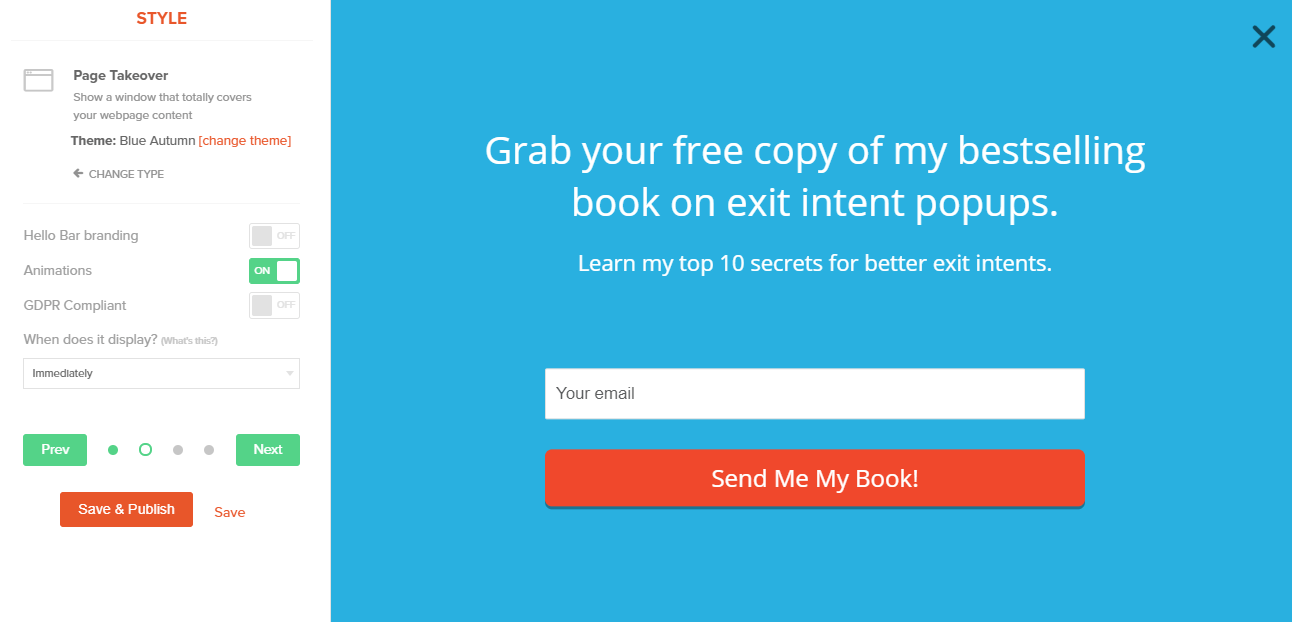
As you can see, Hello Bar makes it easy. You can change everything from images and text to the type of button you use.
Keep collecting email addresses, but make sure you send them into the right categories. Segmentation is critical.
From there, optimize your subject lines and body content for your audience. Give them a reason to look forward to your next email so your open rates increase.
Frequently Asked Questions
While we’re discussing email open rates, here are a couple other questions that need to be answered:
Q1. What Is the Difference Between Open Rate and Click Through Rate?
Both metrics measure email campaign performance, but they track different actions. The open rate tells you what percentage of recipients actually opened your email.
The CTR, on the other hand, indicates the percentage of those who opened the email and clicked on a link within it.
Q2. How to Identify the Best Open Rate Time for Emails?
Unfortunately, there’s no ideal time to send emails. The best time depends on your audience and their habits. A/B testing different times can help you identify the sweet spot for your specific audience. However, it has been noticed that weekdays around mid-morning tend to perform well.
Q3. What Factors Influence Email Open Rates?
Several factors influence open rates. Here are a few key ones:
- Subject Line: A compelling subject line that sparks curiosity is crucial for getting people to open your email.
- Sender Reputation: People are more likely to open emails from familiar senders. Build trust and brand recognition.
- Email List Hygiene: Regularly clean your list of inactive or invalid addresses to improve deliverability and open rates.
Q4. How Often Should I Clean My Email List?
Aim to clean your email list every few months. Remove inactive subscribers, misspelled addresses, and spam traps. A clean list ensures your emails reach engaged recipients, boosting open rates and overall campaign effectiveness.
Q5. How Are B2B Open and Click-Through Rates Different From B2C Businesses?
There’s a slight difference between the open and click-through rates of B2C businesses when compared to B2B businesses. In most cases, B2B businesses tend to get better conversions.
There’s a reason for that, though. When you’re marketing to a B2B audience, you’ve likely done more qualifying work. You’re selling a specific product or service to a specific customer. You’re less likely to attract people who won’t be interested in what you sell.
Conclusion
And you can achieve that by prioritizing audience segmentation, writing compelling subject lines, and delivering valuable content.
But remember, getting good open rates is just the first hurdle. Even the most opened emails fall flat if they don’t drive action. Monitor your click-through rates and unsubscribe rates to gain a well-rounded understanding of your campaign’s effectiveness.
Track your results, experiment with different strategies, and refine your approach over time.
Ready to take your email marketing to the next level? Sign up for a free Hello Bar account today and see how easy it is to create high-converting email campaigns!




